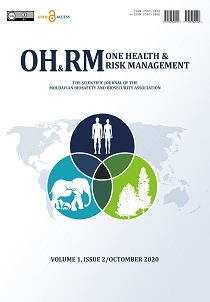Abstract
Introduction. Pathological left ventricular (LV) remodelling in children with metabolic syndrome (MS) is associated with a significant increase in cardiometabolic risk. However, data regarding the prevalence of LV remodelling patterns in children with MS are limited.
Material and methods. An observational analytical cohort study was conducted on 145 children. The diagnosis of MS was established according to the International Diabetes Federation (IDF) criteria. We analyzed the echocardiography, as well as clinical and paraclinical data. Participants were distributed, depending on LV mass index and relative wall thickness into four LV geometric patterns as recommended by American and European Society of Echocardiography: normal geometry, concentric left ventricular remodeling (cLVR), concentric left ventricular hypertrophy (cLVH), and eccentric left ventricular hypertrophy (eLVH).
Results. The pathological remodeling patterns were distributed as follows: 62.1% (n=90) participants showed a normal LV geometry pattern, 27.6% (n=40) – cLVH, 5.5% (n=8) – cLVR and 4.8% (n=7) – eLVH. In terms of presence/absence of MS, 54.7% (n=29) participants from the research group showed a normal LV geometry pattern, 32.1% (n=17) – cLVH, 5.7% (n=3) – cLVR and 7.5% (n=4) – eLVH, whereas 66.3% (n=61) participants from the control group presented normal LV geometric appearance, 25% (n=23) – cLVH, 5.4% (n=5) – cLVR and 3.3% (n=3) – eLVR (χ2=0.52; p>0.05).
Conclusions. Concentric left ventricular hypertrophy was the commonest LV geometric pattern among the subjects with metabolic syndrome. Concentric left ventricular remodeling and eccentric left ventricular hypertrophy were rare among the study population.
|
 Views: 1184|
|
Views: 1184|
|
